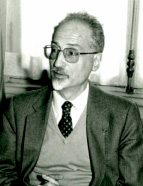

However, after returning from his first long stay in Iran (1948-1955), Jean Aubin joined the Oriental Languages and Civilisations section of the prestigious Centre National de Recherche Scientifique (CNRS) in 1956. In parallel with new research conducted in Tehran, the young researcher’s connection to the CRNS allowed him to spend time in other countries. This was the case in Portugal, which he visited for the first time in 1959 to consult archives related to the city of Ormuz, about which he had written a first article in 1953. Aubin thus began to visit the Arquivo Nacional da Torre do Tombo [National Archives of the Torre do Tombo] (ANTT) on a regular and lengthy basis, where he became acquainted with the director at the time, José Pereira da Costa, and also with the historians Luís de Albuquerque and Avelino Teixeira Mota.
Alongside these numerous trips to Lisbon and his position as a researcher at the CNRS, Aubin was elected director of research at the École Pratique des Hautes Études (EPHE) in 1963, where he taught the history of Iran and the Portuguese empire in Asia until the end of his career in 1994. He also became one of the leading speakers at the Calouste Gulbenkian Foundation’s Cultural Centre in Paris. There, alongside numerous lectures given at Portuguese universities, he consolidated the advent of a “young school of Portuguese orientalists” (Aubin, Le Latin et L’Astrolabe.I, 1996: 9). Notable figures in this “school” included Dejanirah Couto and Jacques Paviot in France and, later in Portugal, Jorge Flores, Jorge Manuel dos Santos Alves and José Alberto Tavim, among other researchers trained directly or indirectly by Aubin. In their own way, they all shared the French historian’s conception and methodology based on “a broad geopolitical vision and the use of primary sources, which he subjected to particularly rigorous scrutiny” (Couto, “Jean Aubin, Le latin et l’astrolabe , 2001: p. 728), made possible by his perfect knowledge of the various working languages.
This work is financed by national funds through FCT - Foundation for Science and Technology, I.P, in the scope of the projects UIDB/04311/2020 and UIDP/04311/2020.
